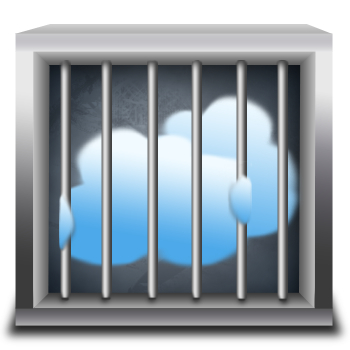07
Sep
Don’t become a prisoner of your computing infrastructure or private cloud. Understand who has custody of your data.
The cloud simplifies remote access, business continuity, and disaster recovery. But what happens when you change IT service vendors?
From basic services like email and Office365 to Infrastructure as a Service and complete virtual desktop, an organization can gain flexibility, redundancy, business continuity, security, and even competitive advantage by working in a Cloud environment.
As reported on by HelpNet Security in late 2020, high-availability access, on-demand computing power, limitless storage, and enterprise grade security lifted the rate of Cloud adoption among small/mid-size businesses even before the pandemic, and hit ludicrous speed once the remote workforce took to their homes.
Since most organizations will use a technology integrator or managed service provider for the migration, what happens when that vendor is no longer providing services? Even without a “long-term contract”, because of how some Cloud environments are designed, a business can get stuck in a scenario that makes it hard to change IT vendors. So, how can your business stay protected? Here’s what you need to know:
1) When MSPs first began considering Cloud for their clients (almost a decade ago) public Cloud wasn’t what it is today, and most built their own.
2) Leveraging private data centers, these technology firms invested in massive infrastructure, and built highly proprietary “walled gardens
3) Offering clients a scalable environment with business continuity and integrated disaster recovery, a solution was born
4) Over the years, IT firms spent hundreds of thousands of dollars in capital expenses and upgrades to ensure performance, availability, and security. Changing their Cloud offering isn’t typically an option
5) Clients in these environments have only one choice when it comes to who can provide services/support. Migrating to a new platform is costly and time intensive
Technology firms that made the leap to offer public infrastructure do see thinner margins, but they also have access to the most cutting-edge technology, integrated cybersecurity tools, and tremendous flexibility for clients that understand data custody and have concerns about uprooting an entire virtual ecosystem if the need for a new technology partner arises.
So What Can You Do?
Understanding who has custody of your data (where data resides), how it’s accessed, and what’s involved when it comes time to sever a relationship is critical, and it’s up to you, the client, to figure it out. Here are some questions to ask:
- Where exactly is your data stored?
- What virtualization tools/systems are used for access?
- Is there anything proprietary about the infrastructure?
- Is there anything proprietary about the access tools?
- What happens if the vendor is no longer providing service?
- Is it a total “lift and shift” of your data, email and apps?
- Is it simply changing the owner of record?
- What’s involved in a typical migration?
- If possible, speak with references and even former clients to discuss their migration experience


